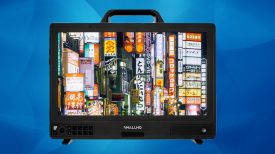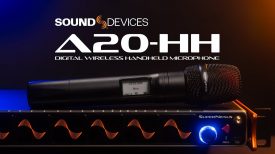By technical editor Matt Allard:
I’ll come straight out and say it – I like the C100 Mark II. If you are a regular follower of Newsshooter this might come as a bit of a surprise. I use Sony cameras most of the time and was not a fan of the Canon C300.
So why do I like the C100 Mark II? There has been a lot of criticism online that the C100 Mark II was not a substantial upgrade over the original C100. It doesn’t have high frame rates or 4K recording. But to me none of this matters given how and what I would use the camera for.
There seems to be a misconception out on the blogosphere that it essential for any new camera to be able to shoot 4K. Many people were disappointed that the C100 Mark II couldn’t do 4K either internally or externally. For me this camera is aimed at run and gun users, people making content strictly for the web and event shooters. For all these type of users 4K is typically a hindrance rather than an advantage. One of the great aspects of using a C100 Mark II is that the SD media is cheap, the batteries last forever and you can can go all day without having to swap out cards or carry lots of spare batteries. If you introduce 4K into the equation, the media costs go up, the recording times come way down and the battery life will decrease. For a lot of people making content out there they don’t need or want 4K. Sure, having the ability to be able to do it is great but it is hardly essential.
At $5500 it sits in a price category that is just below the current price of the older Sony FS700 ($5999) and several thousand dollars cheaper than the hugely popular Sony FS7 ($7999). While it looks massively outgunned on paper compared to the Sony offerings, you should never judge a camera on specifications alone. As a first time user I wanted to take the camera out into a real world situation and see how it would perform. To me shooting charts and doing scientific tests doesn’t give a full assessment of a camera’s abilities. The real world isn’t filled with test charts and perfectly controlled situations. I judge a camera on how it performs in the field – the combination of handling, ergonomics and image quality need to be judged together.
I took the C100 Mark II, a Canon EF 24-105mm f/4L IS USM Lens, Canon EF-S 18-135mm f/3.5-5.6 IS STM Lens, Canon EF 135mm f/2L USM Lens, Canon EF 100mm f/2.8 Macro USM Lens and a Sachtler 1011 System Ace L MS CF Tripod Head and Legs out to Shibuya in Tokyo to shoot whatever caught my eye.
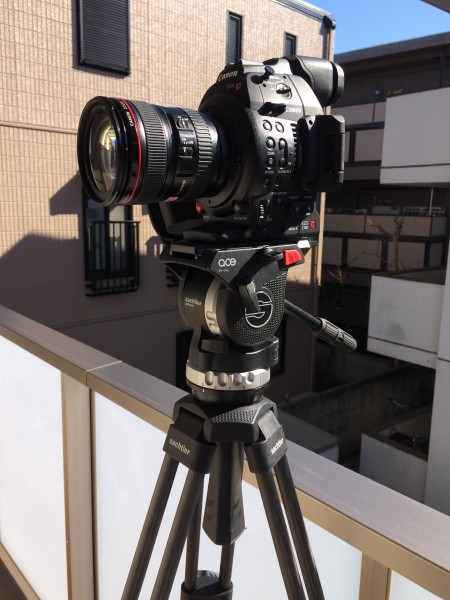
The camera, lenses and one spare battery all fitted into my backpack. With the Canon kit and my tripod in it’s bag I jumped on my push bike and off I went. This is one of the key points right here as to why I like the camera. I could take everything I needed for this shoot and comfortably ride a push bike or take public transport. Sure you could do this with Sony a7S, Panasonic GH4, BMPCC or even a Canon 5D mkIII, but none of these cameras have built in ND or proper audio inputs as standard. The C100 is a one stop shop. It comes with everything you need to shoot with without having to add anything – although in fairness you do need a microphone even though the camera does have a built in one, but more on that later.
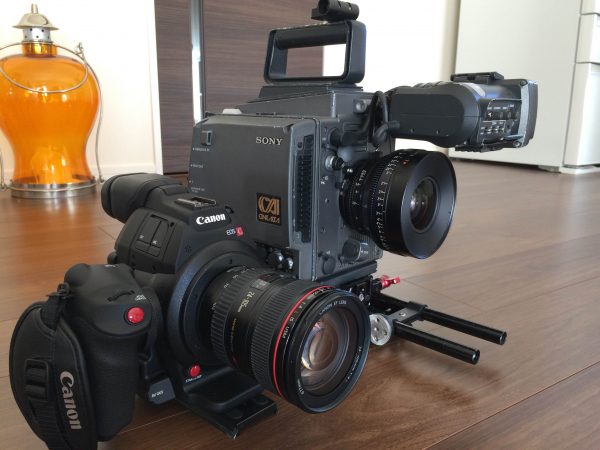
I can see why shooters like fellow newsshooter contributors Jonah Kessel and Spencer Chumley liked the original C100 so much. Both of these guys are solo operators and often in situations and places where travelling light is key.
A good test for me on how easy a camera is to use is to pick it up, turn it on, set it up and use it without looking at any instructions. Apart from a few small things that I encountered the camera was pretty straight forward to operate and set up. For an operator picking up the camera for the first time I think they could be up and shooting quite quickly.
The main thing that I thought was strange when setting up the camera was how to choose what frame rate or codec to shoot in. The C100 Mark II gives you the option of recording in either AVCHD or MPEG4. While this sounds quite straight forward the settings can actually be quite confusing. Have a look at the video below to see what I mean.
The other strange thing was when it comes to using exposure assistance tools. Take a look at this video below.
FUNCTIONALITY
On the positive side the rest of the camera was very easy to use and changing basic functions like aperture, ISO, ND,shutter speed and white balance is a breeze. I did not use any external devices such as aftermarket EVFs, monitors or camera rigs as I wanted to see how easy the camera was to operate and use straight out of the box. The C100 Mark II has a flip out LED screen as well as a inbuilt EVF. As it was a bright sunny day I primarily used the EVF and not the flip out screen. One problem I found when doing this is that the waveform cannot be seen on the EVF and I had to have the flip out screen open to use this feature. The quality of the EVF and LCD screen are good but not great. I didn’t have any real problems using the EVF apart from the odd time when I wanted to shoot specific angles. The EVF has very little angle adjustment range and becomes useless when trying to shoot with the camera on a tripod at any height above eye level. The LCD screen has plenty of range and movement but like all LCD screens you struggle to see it in bright sunlight (Ed- alhough I guess you could add a Zacuto Z-finder).
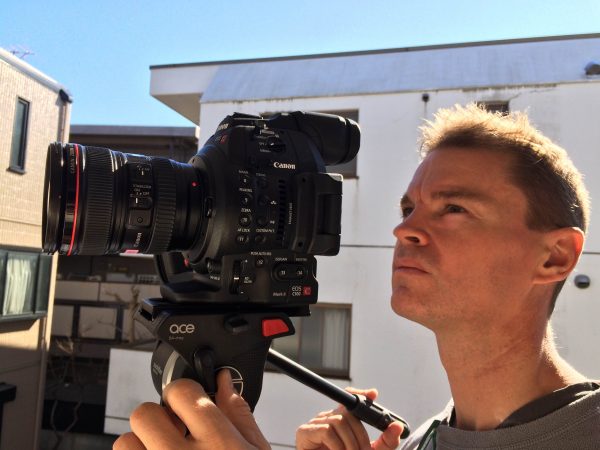
BUILD QUALITY
The C100 Mark II feels solid in the hand and the flip out LCD screen and EVF are strong and don’t feel like they would break easily. The removable top handle that features all the audio inputs and controls attaches to the main body of the camera via a cold shoe. While this if fairly secure, on the camera I tested it did tend to wobble around a little bit – something the original C100 was also guilty of.
DUAL PIXEL AUTOFOCUS
One of the strengths of the C100 Mark II is the inclusion as standard of Dual Pixel CMOS AF. It provides a continuous AF (Autofocus) function for most Canon EF autofocus lenses. A new AF Lock setting also lets you change the image framing while holding the desired focus. This feature works pretty well as long as your subject is in the middle of frame. The autofocus also seems to work better with certain lenses than others.
According to Canon the Dual Pixel CMOS AF technology features a CMOS sensor consisting of an array of pixels that each feature two separate photodiodes. By continuously comparing their outputs during AF mode, phase-difference autofocus helps ensure non-blurred images and smooth focus transitions even when the talent and/or camera are moving. The new feature places a high priority on maintaining sharp focus while providing a natural, smooth autofocus movement with select Canon EF lenses – including newer-generation STM lenses – which offer even smoother and quieter operation.
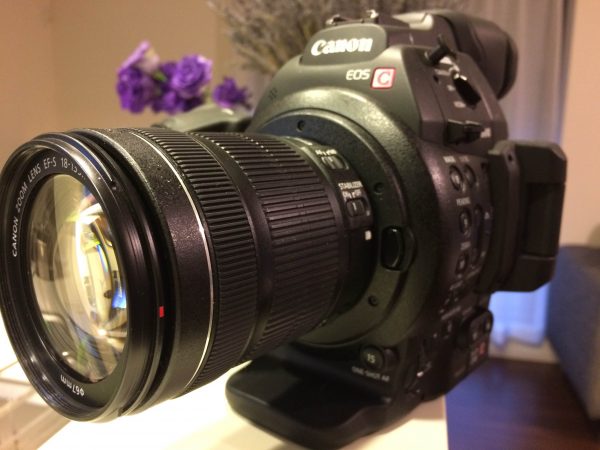
I think the autofocus system works really well when following a subject and I can see it being very popular with shooters who are using the camera on a brushless gimbal or Steadicam. While I still prefer using manual focus for most of my work it is nice to have an auto focus system that performs well for certain situations when it is required.
NO BROADCAST FRIENDLY CODEC
What is definitely lacking if you intend to use it for any type of broadcast work is 50Mb/s internal recording – something that you have to step up to the big brother C300 for if required. This can be quite easily solved by adding a light weight external recorder such at the Atomos Ninja Star, although this of course adds a little bulk.
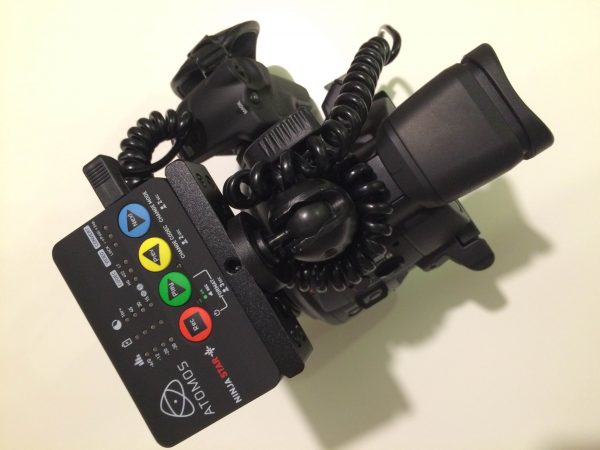
AUDIO FEATURES
The main XLR audio inputs into the C100 Mark II are built into the handle, but to make the camera smaller you can use it without the top handle and still record audio. There is a small built-in microphone on the camera body but to be honest it is horrible and you can’t use it in even the lightest breeze. The only benefit of it would be for recording scratch audio to help you sync up sound later on with good audio from an external recorder. You can choose to input audio in through a 3.5mm mini jack with a mic like the Rode Videomic Pro – which would be a much better option than going with the internal microphone while still keeping things small.
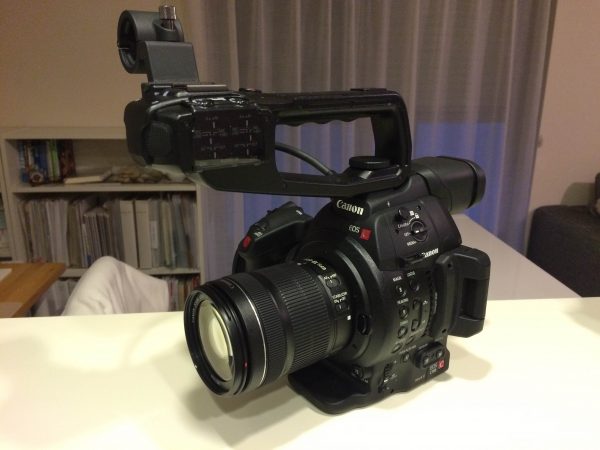
BATTERY LIFE:
Battery performance is outstanding. I left the camera turned on even when I wasn’t recording and after a couple of hours the battery still had more than 50% remaining. Just carrying two batteries would get you through most shooting days.
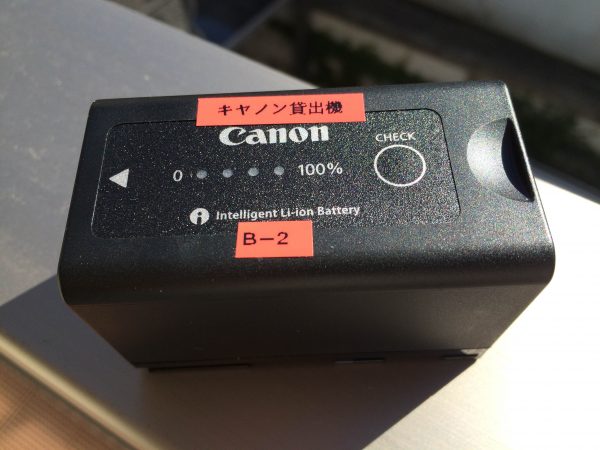
THE MEDIA:
The camera records to affordable SD cards and even a single 64GB card will get you more than 5 hours when shooting 1080/24P. There are two slots for SD cards and you can choose to dual record to both at the same time if need be. If you are not dual recording the two SD cards will give you around 11hours of internal recording. If your shooting events or run and gun material not having to worry about carrying lots of media or constantly having to change it is another big plus.
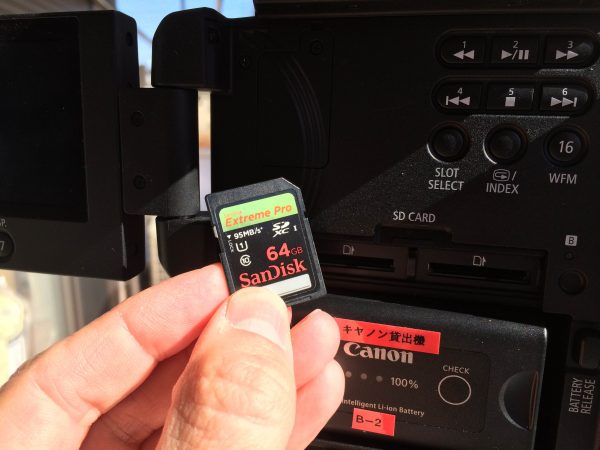
IMAGE QUALITY:
As far as the image quality goes it definitely does have a different look to the Sony cameras I’m used to. Whether you prefer the Canon or Sony in-camera looks is something people will always argue about. I thought the images out of the camera were quite nice but to my eye when reviewing footage shot in C-Log the blacks already look quite crushed even when sitting up around 20IRE. I found if i pulled them down to 0 the blacks became way to dark. That said there is definitely a lot less work to do to the image if you shoot in C-log as opposed to say S-log on a Sony camera. For the type of user this camera is aimed at I think that is a good thing. Most C100 Mark II owners are going to prefer to shoot an image that can be turned around quickly without having to spend a long time colour correcting it. To my eye I thought the images lacked the detail of some other HD cameras out there on the market, but I think the image compares favourably with a Sony FS700 when recording AVCHD. Recording externally to ProRes would probably help with the level of fine detail you could see.
CONCLUSION:
While lacking features such as 4K, HFR recording (it does do 60P), and a broadcast friendly codec, the C100 Mark II does tick a lot of other boxes. If your shooting primarily for the web and only require a camera capable of recording HD then you should seriously look at the C100 Mark II. For me it is a camera that you don’t want to have to put on a rig, use an external recorder or build up in any way. If you use the camera exactly as it was intended from the manufacturer then I think you will get good results. For hand held use I think you are far better just holding it up to your eye and using an Image stabilised lens, rather than putting it on a rig that just makes the camera bigger and more cumbersome. If you are looking for a camera to put on your shoulder then look elsewhere.
With a good auto focus system, ease of use, great battery performance and a pleasing image the C100 Mark II is one of the better solutions out there on the market if all you need is HD.



